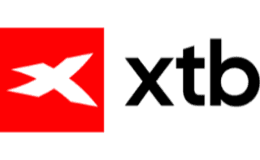All investing should be regarded as longer term. The value of your investments can go up and down, and you may get back less than you invest. Past performance is no guarantee of future results. If you’re not sure which investments are right for you, please seek out a financial adviser. Capital at risk.
If you’re investing in US stocks, then you’ve probably come across the S&P 500 and the Nasdaq. But what’s the difference between the S&P 500 and the Nasdaq and which should you invest in? Let’s dive in and take a closer look.
The S&P 500 is a stock market index and the Nasdaq is a stock exchange. There’s a lot of overlap between the two because plenty of stocks listed on the Nasdaq exchange are also members of the estemeed S&P 500 list. So, many of the top 10 stocks are the same. If you’re invested in both, you may not be as diversified as you think. Here are the top 10 stocks in both indices.
What is the best S&P 500 vs Nasdaq index fund?
The best Nasdaq or S&P 500 index fund will depend on your circumstances.
All S&P 500 index funds should be tracking the full index, whereas with the Nasdaq stock exchange, it’s the Nasdaq 100 that tends to be the most popular index fund, which only contains 100 stocks.
Here are some of the best performing S&P 500 and Nasdaq funds according to JustETF:
| ETF | Icon | 1-year performance (to Dec. '25) | 5-year performance (to Dec. '25) | Link |
|---|---|---|---|---|
| iShares Core S&P 500 ETF USD (Acc) (CSP1) |  |
8.49% | 97.90% | Invest Capital at risk |
| SPDR® S&P 500 ETF (SPX5) |  |
7.36% | 86.19% | Invest Capital at risk |
| Vanguard S&P 500 ETF (VUSA) |  |
7.64% | 86.10% | Invest Capital at risk |
| Fund | Icon | 5-year performance (to Feb. ’24) | 1-year performance (to Feb. ’24) | Link to invest |
|---|---|---|---|---|
| Amundi NASDAQ 100 (ANXG) |  | 164.88% | 35.86% | Invest with IGCapital at risk |
| Lyxor NASDAQ 100 ETF (NASL) |  | 163.76% | 35.78% | Invest with IGCapital at risk |
| iShares NASDAQ 100 (CNX1) |  | 161.79% | 35.15% | Invest with eToroCapital at risk |
| Invesco NASDAQ 100 (EQSG) |  | N/A | 35.97% | Invest with IGCapital at risk |
| Xtrackers NASDAQ 100 (XNAQ) | N/A | 35.27% | Invest with IGCapital at risk |
Platforms to invest in the Nasdaq and S&P 500
These trading apps allow you to invest in companies within the S&P 500 index or listed on the Nasdaq stock exchange, or alternatively use a fund or exchange-traded fund (ETF).

Fractional shares
Free to open an account

Fractional shares
6,000+ stocks/ETFs

Commission-free trades
Advanced trading tools
Top 10 stocks on the Nasdaq and S&P 500
Nasdaq
Nasdaq 100 and S&P 500 overlap
The following companies are constituents of both the Nasdaq 100 index and the S&P 500 index. This information is updated daily.
What is the Nasdaq composite index?
The Nasdaq Composite Index was launched in 1971 and had an initial value of 100. It includes all the companies listed on the Nasdaq stock exchange.
It shouldn’t be confused with the Nasdaq 100, which as index containing the biggest 100 companies in the Nasdaq stock exchange. The Nasdaq is the second biggest stock exchange in the US after the New York Stock Exchange (NYSE).
The Nasdaq is quite tech stock heavy, with plenty of modern growth-focused firms rather than more traditional value stocks.
What is the S&P 500?
The S&P 500 was founded in 1982 and it includes 500 of the largest companies trading on all 3 of the main US stock exchanges: the NYSE, Nasdaq and Cboe.
The S&P 500 has strict criteria for its constituents. A company must have a market cap of at least $14.6 billion, be highly liquid and the public must own at least 10% of its shares.
The S&P is spread across a wider range of sectors than the tech-heavy Nasdaq index. This means it’s slightly less exposed to concentrated crashes within one sector.
Which is the best investment, the Nasdaq or the S&P 500?
The best investment for you depends on your investment goals. Here’s a summary of what to consider:
- Are you looking for current income or future potential growth? If you want future growth then stocks listed on the Nasdaq may be suitable but if you want current income then the S&P 500 may be more useful.
- What is your attitude to investment risk? The tech heavy Nasdaq index tends to be more volatile in price movements compared to the S&P 500 as it contains a higher concentration of tech-focused growth stocks.
- What other investments do you hold in your portfolio? The S&P 500 and Nasdaq overlap in som eareas, so you need to check what else you hold within your portfolio if you want it to be diversified. If you want more exposure to tech stocks then the Nasdaq could be a good choice, but the S&P 500 still has a strong tech offering.
Nasdaq vs S&P 500 chart
Nasdaq vs S&P 500: Which is bigger?
The S&P 500 contains 500 of the biggest companies in the US whereas the Nasdaq Composite contains more than 3,000 stocks. However some Nasdaq companies are very small and the total value of the Nasdaq Composite is actually lower than the S&P 500.
Nasdaq vs S&P 500: Which is worth more?
The S&P is worth an eye-watering $50 trillion (about £40 trillion). In contrast, the NASDAQ composite index is worth a grand total of around $20 trillion (around £16 trillion) despite having over 3,000 stocks in total. That’s because it includes a large proportion of smaller tech companies.
Nasdaq vs S&P 500: Concentration
Both the Nasdaq and the S&P 500 are extremely concentrated, with the largest companies making up a big proportion of the total market value of the index and the exchange.
For the Nasdaq, the top 20 companies are mainly tech giants and account for 47% of the overall value of the index. Likewise, the S&P 500 is extremely concentrated towards the biggest companies with just 4 companies making up nearly 21% of the S&P 500 index
Nasdaq vs S&P 500: Stock quality
Quality investing is where investors look for certain criteria in their investments. It’s based on management credibility as well as balance sheet stability and financial performance.
The S&P arguably contains a higher proportion of quality stocks than the Nasdaq. That’s because they need to meet a strict verification criteria to be included in the S&P 500.
If you want to invest purely in quality stocks then you could choose the S&P quality index which is a pre-vetted group of quality companies which are selected based on return on equity and other financial ratios.
Nasdaq vs S&P 500: Which is more diversified?
Both indices are fairly diversified as you will spread your investment across many underlying US stocks. But both indices are also heavily weighted towards the bigger companies. For example, if you invest purely in the S&P 500 index then 21% of your investment will be in the top 4 biggest companies in the index.
Instead, most experts recommend that you also diversify your investments across different asset classes and different geographical areas. Then you won’t be too badly affected if one business fails.
Is it better to invest in the S&P 500 or the Nasdaq?
![]()
Whether the Nasdaq or S&P 500 is best for you will depend on your circumstances and the other funds and assets in your portfolio.
If you want more exposure to potential growth stocks then the Nasdaq might be a good choice with its emphasis on tech stocks. If you prefer a more general US index fund then the S&P might be right for you as you’ll be invested in 500 of the biggest companies in the US.
How to invest in the S&P 500 and Nasdaq
- Find an S&P 500 or Nasdaq ETF, index fund or mutual fund. Some index funds track the performance of all stocks on the index, whereas others only track a certain number of stocks or are weighted more towards specific stocks. You should select the fund that best suits your investment goals.
- Open a share-trading account. In order to invest in the funds, you’ll need to open a trading account with a broker or platform. Keep in mind that some index funds may only be available on certain brokerages or platforms. The providers in our comparison table below let you invest in US shares. We’ve listed some index funds below that are listed on the London Stock Exchange (LSE).
- Deposit funds. You’ll need to deposit funds into your account to begin trading. Some brokers may charge you deposit fees, or you may need to pay a forex fee in order for your pounds to be converted into US dollars.
- Buy the index fund. Once your money has been deposited, you can then buy the index fund. You’ll generally pay a small annual fee to invest in an ETF or index fund.
Bottom line
When comparing the Nasdaq stock exchange and S&P 500 index, it’s important to remember that there’s a big overlap. If you want to be invested in the biggest US companies, then you might want to choose the S&P 500. In contrast, if you want to invest more tech-focused companies then you might prefer the Nasdaq 100.
Frequently asked questions
All investing should be regarded as longer term. The value of your investments can go up and down, and you may get back less than you invest. Past performance is no guarantee of future results. If you’re not sure which investments are right for you, please seek out a financial adviser. Capital at risk.
Sources
More guides on Finder
-
How to invest in the Nasdaq 100
Learn how to invest in the Nasdaq 100 from the UK, including where to access it and some of the best funds and ETFs available to investors.
-
How to invest in the best global index funds and ETFs
Here’s your ultimate guide to navigating the world of global investing from the comfort of your sofa or even on your phone on the go.
-
S&P 500 Vs. Nasdaq Vs. Dow Jones
The three best-known US indices go head to head. Search by company, review performance over time and understand key differences.
-
How to invest in the EURO STOXX 50
Learn how to invest in the Euro Stoxx 50 from the UK and discover some of the best Euro Stoxx 50 index funds and where you can invest in them.
-
Invest in the Nikkei 225
Find out more about the Nikkei 225, some companies that make it up and how you can invest in the Nikkei 225.
-
Invest in the Hang Seng
Find out what makes up the Hang Seng index. We’ve compiled the different ways that you can invest in Hang Seng, such as through ETFs.
-
Invest in the DAX
Find out how to invest in DAX, the 40 largest companies on the Frankfurt Stock Exchange. We’ve compiled some ETFs and other ways you can invest.
-
How to invest in index funds
In a nutshell, an index fund is a low-cost portfolio of shares and other assets that tracks a financial or stock market index. They’re a popular investment choice in the UK and worldwide.
-
How to invest in the S&P 500
Learn how to invest in the S&P 500 from the UK and discover some of the best S&P 500 index funds and where you can invest in them.
-
How to invest in the FTSE 100
The FTSE 100 is the UK’s most famous stock index. Here’s how you can invest in it today.

